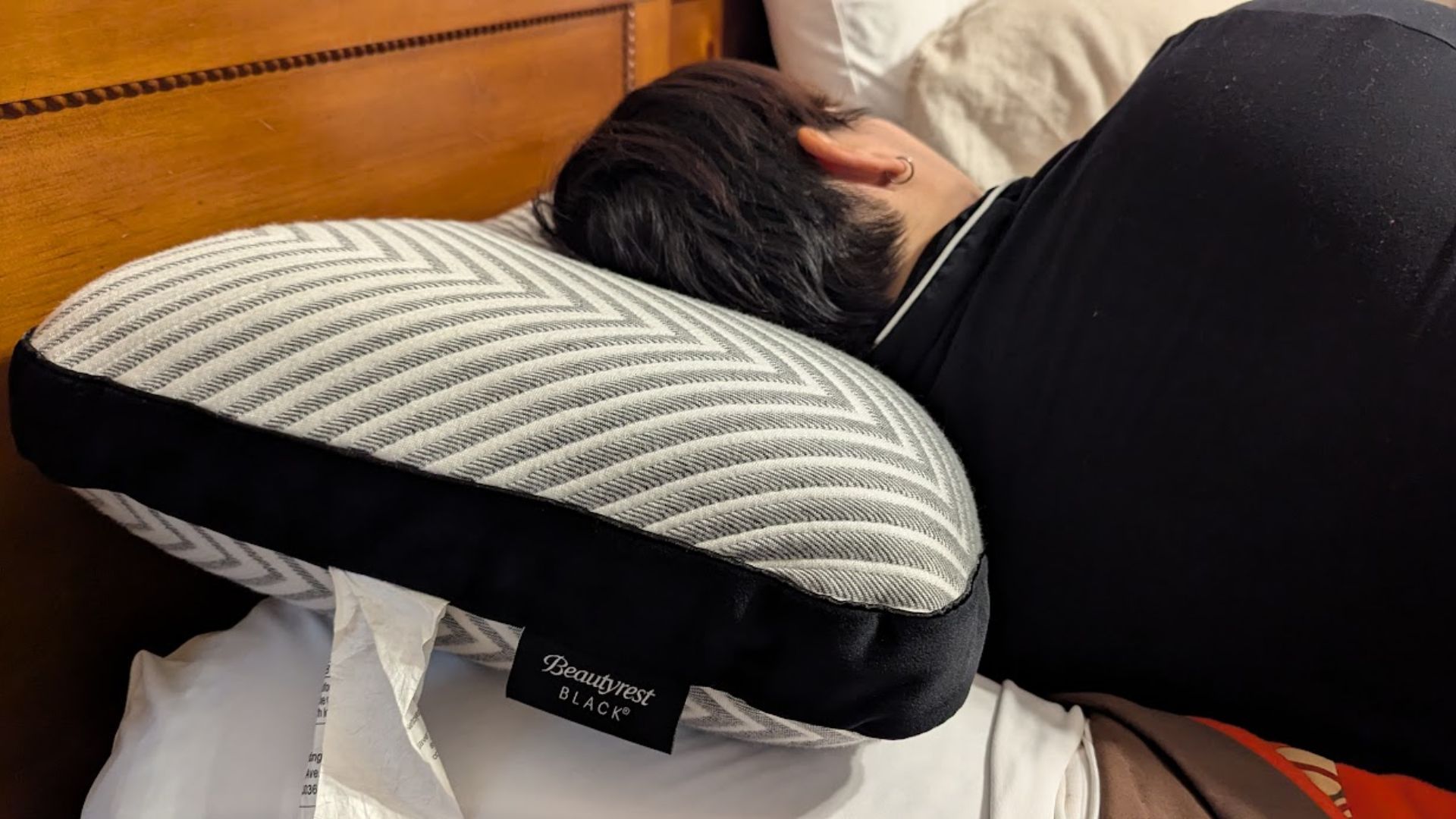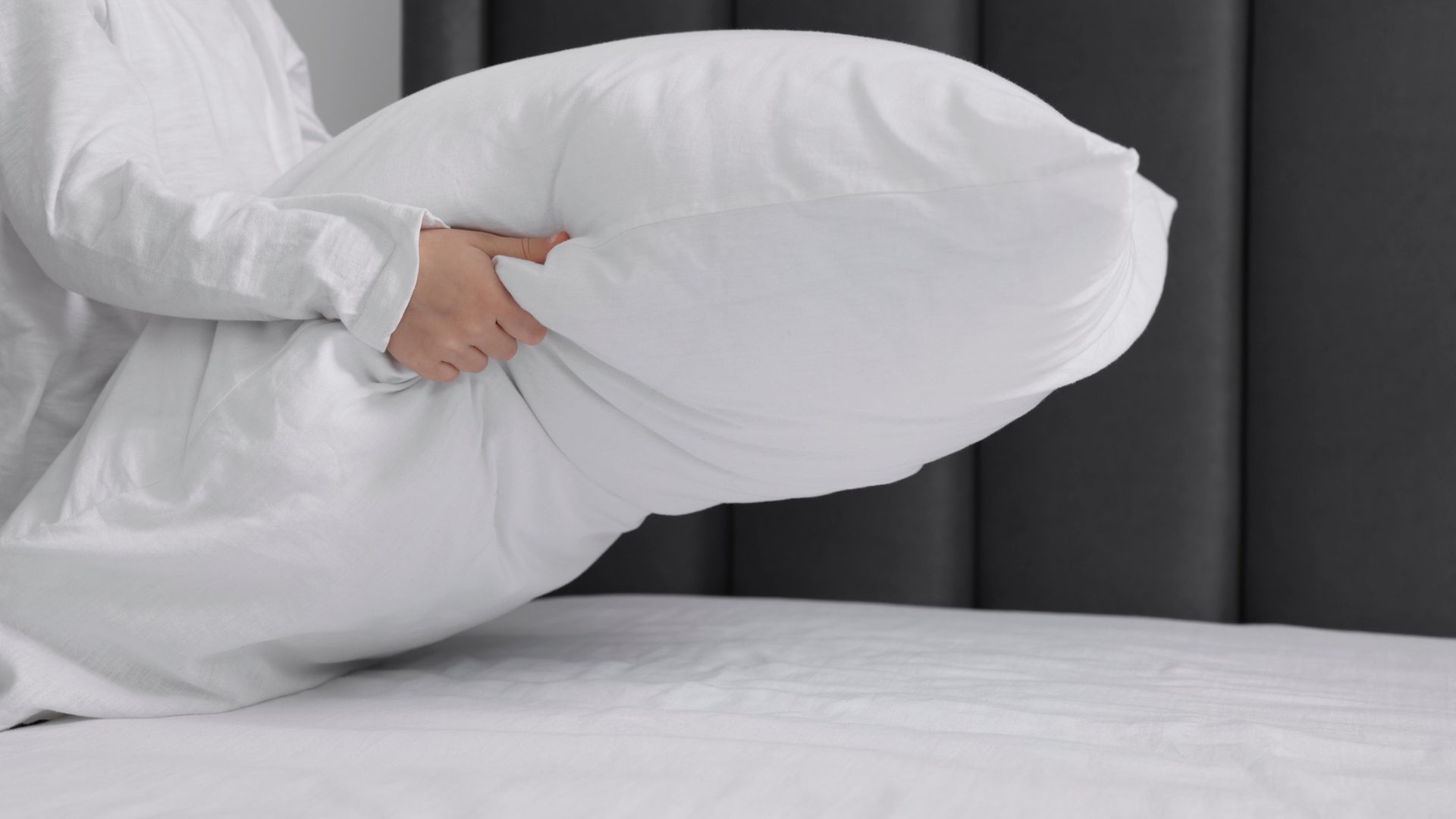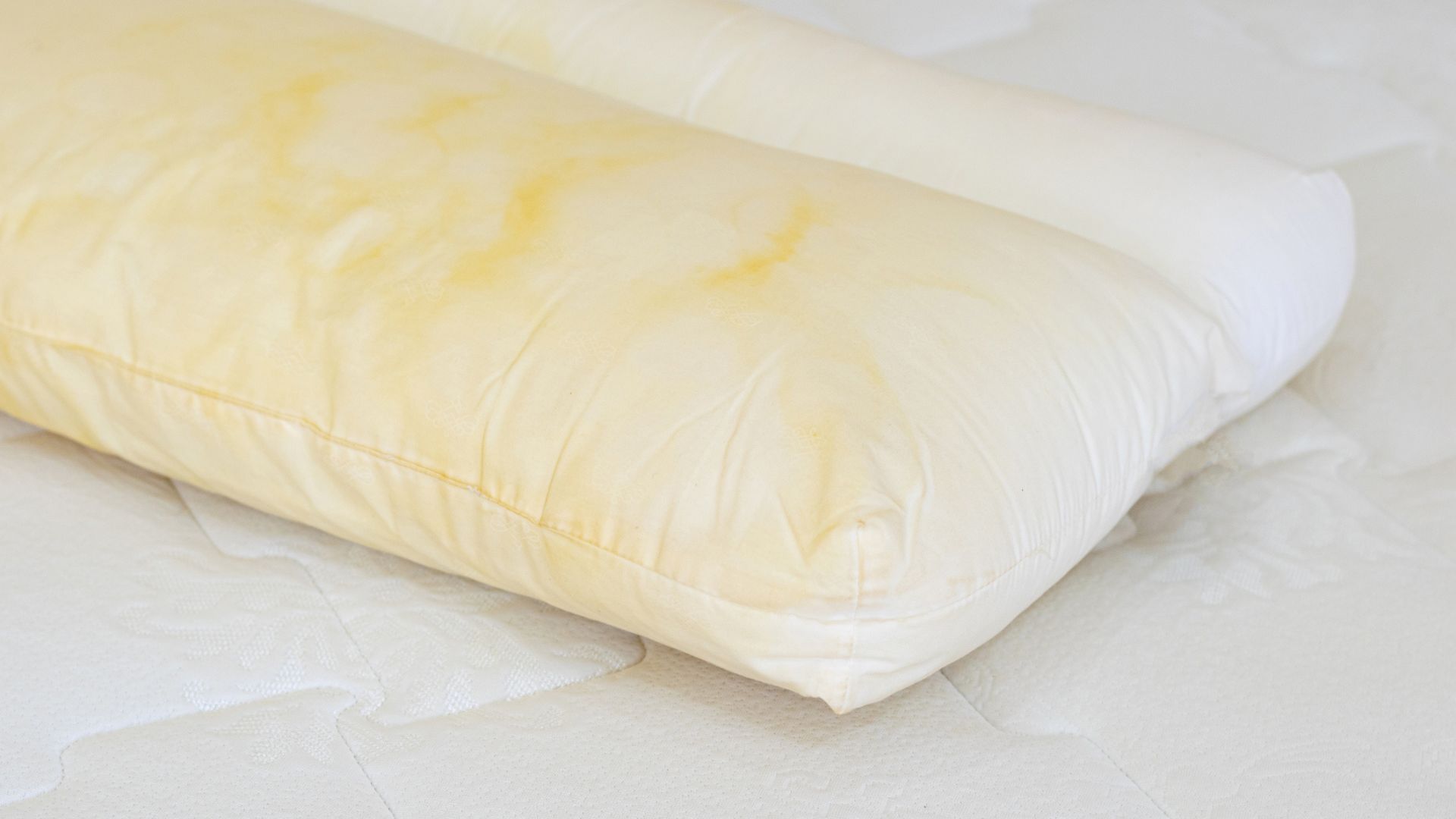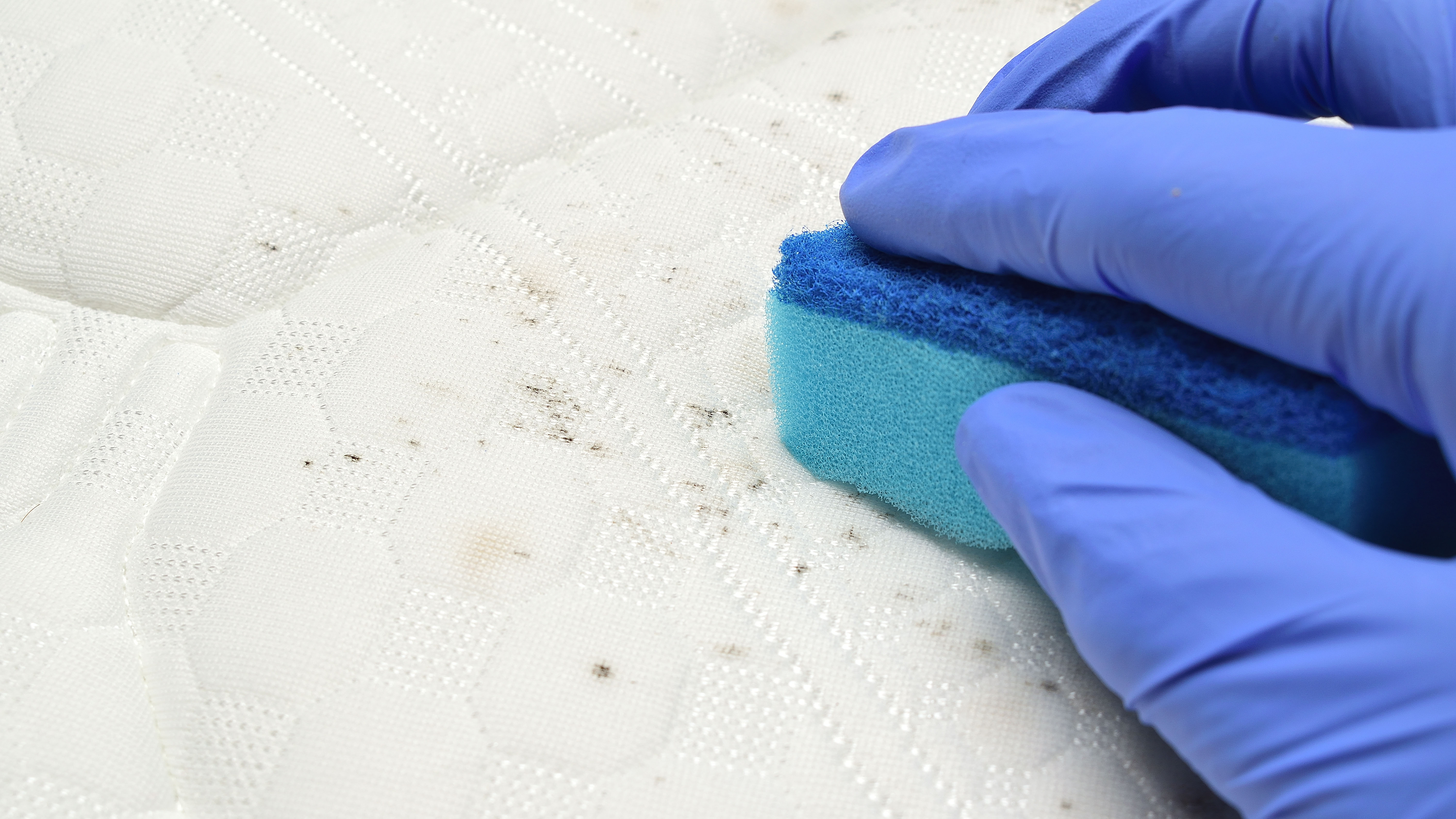How to wash a memory foam pillow
You need to avoid the washing machine when it comes to memory foam, but we're here to help

If you want to keep your sleep space fresh and hygienic, and that includes a memory foam pillow, keeping it clean is essential. Not only does regular cleaning help prevent allergens, bacteria and stains from building up, it can also maximise the life of your pillow. Win, win!
Some of the best mattresses are made using memory foam, thanks to its ability to contour to the shape of the sleeper. Pillows made from this material are no different; they contour to the head and neck providing excellent support and promoting proper spinal alignment. That's why they're generally among the best pillows for anyone with neck or back pain.
Cleaning them isn’t as simple as just throwing them in the washing machine, though, since memory foam requires special care. Of course, it may be time for new pillows or even a new bed, (in which case, the Presidents’ Day mattress sales are a great time to upgrade your sleep space) but if your memory foam pillow is still in good condition, this step-by-step guide to washing them will help them stay that way for longer...
Can you wash a memory foam pillow?
You can, but it’s not quite as easy as washing other pillow types. Memory foam is a really sensitive material that doesn’t react well to moisture or heat, so you can’t just pop them in your washing machine or tumble dryer as you may do with a synthetic fill or down pillow.
This is because the harsh agitation and spinning of the washing machine can tear the foam, causing it to break down and lose its supportive properties, whilst the heat of the water or dryer can deform its shape. Instead, gentle, manual washing is the best way to clean a memory foam pillow, as it protects the foam whilst removing any dirt or allergens.

How to wash a memory foam pillow
Step 1. Vacuum the pillow
Your first step should be to remove the pillowcase and vacuum both sides of the pillow. Be sure to use the upholstery attachment as this will prevent any damage to the foam.
Vacuuming will remove all loose debris, dust and dead skin cells that have accumulated on the surface and settled within the foam pores, and remove any dust mites or bed bugs in your pillow that could be causing allergy symptoms. Remember to pay special attention to any seams or crevices where dust can collect.
Sign up to get the BEST of Tom's Guide direct to your inbox.
Get instant access to breaking news, the hottest reviews, great deals and helpful tips.
Step 2. Spot clean stains
If you’ve noticed stains or yellowing on your pillow, it's most likely the result of sweat, sebum and saliva. Yes, it looks unsightly, but it's totally normal (being a result of these clear liquids reacting with oxygen) and generally nothing to worry about. Still, if it's left, it can cause bacteria growth which will lead to bad smells and the pillow losing its supportive qualities, so it's best to tackle as soon as you can.
To spot treat stains, we suggest mixing together a paste made from cold water, baking soda and a drop of mild detergent. Blot this on to the stain and leave to dry for around 20 minutes before brushing off any excess powder.

Step 3. Create a cleaning solution
Next, you need to create a cleaning solution that is suitable for cleaning the entire pillow. Avoid using any harsh cleaners, including anything bleach-based, as this will eat away at the sensitive memory foam (and leave behind an odor that can give you a headache).
We recommend a mixture of one part mild laundry detergent and two parts lukewarm water — just be mindful not to have the water too hot as heat damages the foam. Mix this solution together until you see light suds appear.
Step 4. Time to clean the pillow
Now you’ve prepared your cleaning solution, it’s time to clean the pillow. However, it's really important to remember that you must not saturate the foam. We would recommend using a spray bottle for your solution to help control the amount of liquid used and create an even covering, but if you don’t have one, you can apply it using a clean, absorbent cloth.
Using your solution, spray or dab the entire surface of the pillow, working in sections for good, even coverage. Pay special attention to the section of the pillow that you sleep on the most. Once your pillow is covered in the solution, take a clean cloth and gently press the foam to allow the cleaning solution to penetrate the area, but do not rub, twist or wring the pillow as this could cause damage.
Step 5. Allow your pillow to dry
It's now time leave your pillow to dry. Memory foam doesn’t dry as quickly as other materials, so keep in mind that this could take up to 48 hours. However, you can try to speed up the process by using fans to circulate air around the pillow, and flip it often for even drying and so water doesn’t pool in one area.
Never use a hair dryer or any other source of direct heat, as these will damage the structure of the memory foam. And, always ensure your pillow is fully dry before sleeping on it to prevent mold growth. Mold won't just damage your pillow and smell bad, it can be dangerous for your health too.

How often should you clean a memory foam pillow?
Ideally, you should vacuum your pillow at least once a month, as this will remove any dead skin cells, dirt, pollen and dust mites that may be on the surface. However, if you have pets or allergies, you may want to do this more often so you don't have to replace the pillow.
Deep cleaning, on the other hand, should be done once every six months. Although you may be tempted to do this more often, you actually want to avoid cleaning memory pillows too much as the moisture involved could cause damage (and it's a long process!).
How to keep a memory foam pillow clean
Prevention is better than cure when it comes to keeping a memory foam pillow clean, so we'd recommend investing in a waterproof pillow protector.
Pillow protectors are removable covers that goes under the pillowcase to protect your pillow from stains, moisture, allergens, dust mites and bed bugs. They are machine washable, which is much more convenient that the the process for cleaning a memory foam pillow.
And, as with our advice for cleaning your mattress, always deal with any spills immediately by blotting the area with a clean, dry cloth. You may also want to consider using a dehumidifier in your room to limit the moisture on your pillow if you live in humid conditions.
Finally, it's worth airing your pillow every week when you change your bedlinen to keep hem fresh and reduce moisture. Just remove the pillowcases and leave them in a room that has the windows open.

Rachael is a freelance journalist based in South Wales who writes about lifestyle, travel, home and technology. She also reviews a variety of products for various publications including Tom’s Guide, CreativeBloq, IdealHome and Woman&Home. When she’s not writing and reviewing products she can be found walking her Sealyham and West Highland terrier dogs or catching up on some cringe-worthy reality tv.